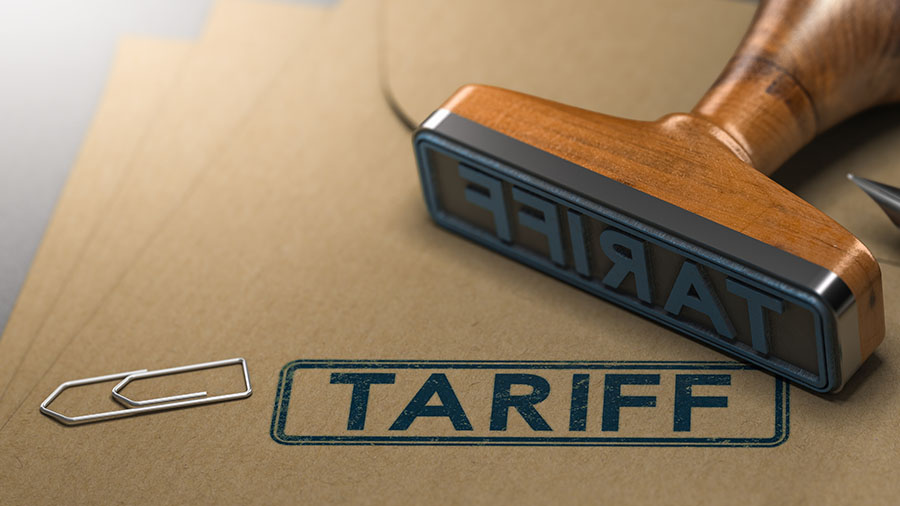China
China Says Fukushima Is No Chernobyl
China played down parallels between Japan’s nuclear crisis and Chernobyl, arguing that the impact from radiation on China has been just a tiny fraction of what it experienced from the Soviet Union’s nuclear disaster a quarter-century ago. The statement, published on the website of the Ministry of Environmental Protection (in Chinese here ), which regulates nuclear energy in China, comes as Beijing has placed increasing pressure on Japan to make its handling of the crisis more transparent. Japan on Tuesday raised the rating of the situation at the its Fukushima Daiichi nuclear power plant to level 7 from level 5 on the International Nuclear Event Scale , putting it in the same category as the 1986 Chernobyl disaster. “The impact on our country’s environment has been small,” the ministry’s statement read, “equivalent to about 1% of the impact of the Chernobyl incident on our country.” To put things in perspective: most of China is quite far from Fukushima—the distance to Beijing is more than 2,100 kilometers. But it is even farther from Chernobyl: more than 3,500 kilometers at the western most part of Xinjiang, and closer to 6,500 kilometers for Beijing. Chinese officials have worked to ease public anxiety over the effects of airborne radiation from Fukushima, which so far has been detected widely in China but only at very trace levels, according to government data. Japanese officials also have argued that even though they raised the crisis level, containing the problem is less difficult than during the Chernobyl incident. “It is quite different from Chernobyl,” said Hidehiko Nishiyama, spokesman for Japan’s Nuclear and Industrial Safety Agency at a press conference Tuesday. “First, the amount of released radiation is about a tenth of Chernobyl.” China last week said it was concerned over Japan’s decision to discharge some 11.5 million liters of radiation-contaminated water into the Pacific Ocean. The government also announced expanded food and feed import bans from 12 affected Japanese areas. Premier Wen Jiabao in a phone call Tuesday with Japanese Prime Minister Naoto Kan said China remained concerned about the incident, according the state-run Xinhua news agency , and urged Japan to act in accordance with international laws. –Brian Spegele, follow him on Twitter @bspegele
China played down parallels between Japan’s nuclear crisis and Chernobyl, arguing that the impact from radiation on China has been just a tiny fraction of what it experienced from the Soviet Union’s nuclear disaster a quarter-century ago. The statement, published on the website of the Ministry of Environmental Protection (in Chinese here ), which regulates nuclear energy in China, comes as Beijing has placed increasing pressure on Japan to make its handling of the crisis more transparent. Japan on Tuesday raised the rating of the situation at the its Fukushima Daiichi nuclear power plant to level 7 from level 5 on the International Nuclear Event Scale , putting it in the same category as the 1986 Chernobyl disaster. “The impact on our country’s environment has been small,” the ministry’s statement read, “equivalent to about 1% of the impact of the Chernobyl incident on our country.” To put things in perspective: most of China is quite far from Fukushima—the distance to Beijing is more than 2,100 kilometers. But it is even farther from Chernobyl: more than 3,500 kilometers at the western most part of Xinjiang, and closer to 6,500 kilometers for Beijing. Chinese officials have worked to ease public anxiety over the effects of airborne radiation from Fukushima, which so far has been detected widely in China but only at very trace levels, according to government data. Japanese officials also have argued that even though they raised the crisis level, containing the problem is less difficult than during the Chernobyl incident. “It is quite different from Chernobyl,” said Hidehiko Nishiyama, spokesman for Japan’s Nuclear and Industrial Safety Agency at a press conference Tuesday. “First, the amount of released radiation is about a tenth of Chernobyl.” China last week said it was concerned over Japan’s decision to discharge some 11.5 million liters of radiation-contaminated water into the Pacific Ocean. The government also announced expanded food and feed import bans from 12 affected Japanese areas. Premier Wen Jiabao in a phone call Tuesday with Japanese Prime Minister Naoto Kan said China remained concerned about the incident, according the state-run Xinhua news agency , and urged Japan to act in accordance with international laws. –Brian Spegele, follow him on Twitter @bspegele
Go here to see the original:
China Says Fukushima Is No Chernobyl
China
Foreign Tourist Groups on Cruise Ships Fully Permitted Visa-Free Entry in China

China will allow visa-free entry for foreign tourist groups arriving by cruise ship at 13 ports along the coast, starting May 15, 2024. Visitors must stay with the same ship and in permitted areas for up to 15 days. This policy aims to boost tourism and facilitate high-quality development in the cruise industry.
China’s immigration agency announced that it will grant a visa-free policy for foreign tourist groups to enter China by cruise at all cruise ports along the coast of China, starting May 15, 2024. The tourist group must remain with the same cruise ship until its next port of call and stay within permitted areas for no more than 15 days.
Effective May 15, 2024, the National Immigration Administration (NIA) has officially implemented a visa-free policy for foreign tourist groups entering China via cruise ships. This progressive move aims to enhance personnel exchanges and foster cooperation between China and other nations, furthering the country’s commitment to high-level openness.
Under this policy, foreign tourist groups, comprising two or more individuals, who travel by cruise ship and are organized by Chinese domestic travel agencies, can now enjoy visa-free entry as a cohesive group at cruise ports in 13 cities along the Chinese coast.
The tourist group must remain with the same cruise ship until its next port of call and stay within China for no more than 15 days. The eligible areas for this policy are coastal provinces (autonomous regions and municipalities) and Beijing.
Furthermore, to support cruise tourism development, seven additional cruise ports—Dalian, Lianyungang, Wenzhou, Zhoushan, Guangzhou, Shenzhen, and Beihai—have been included as applicable ports for visa-free transit.
The recent implementation of the visa-free policy for foreign tourist groups entering China via cruise ships is poised to have several significant effects. The policy will provide crucial support for the cruise economy and the overall cruise industry. By facilitating smoother travel for foreign tourist groups, it acts as a catalyst for high-quality development in this sector.
Additionally, under this policy, international cruise companies can strategically plan their global routes by designating Chinese port cities, such as Shanghai, Xiamen, and Shenzhen, as docking destinations. This move is expected to attract more cruise ships to Chinese ports, ultimately bringing in a larger number of international visitors to the Chinese market.
This article is republished from China Briefing. Read the rest of the original article.
China Briefing is written and produced by Dezan Shira & Associates. The practice assists foreign investors into China and has done since 1992 through offices in Beijing, Tianjin, Dalian, Qingdao, Shanghai, Hangzhou, Ningbo, Suzhou, Guangzhou, Dongguan, Zhongshan, Shenzhen, and Hong Kong. Please contact the firm for assistance in China at china@dezshira.com.
China
China’s New Tariff Law: Streamlining and Standardizing Current Tariff Regulations

China’s new Tariff Law consolidates import and export duties, clarifies rules for imposing counter-tariffs, and sets a December 1, 2024 effective date. It codifies existing practices on cross-border e-commerce and rules on the origin of goods into law, impacting trade relations.
China’s new Tariff Law consolidates rules on import and export duties that were previously implemented via several legal documents and makes important clarifications and additions to prior regulations. Among other changes, it stipulates provisions for the Chinese government to impose counter-tariffs on imported goods, codifying these powers into law for the first time. We outline all the notable updates to the China Tariff Law and discuss the implications for the country’ current trade relations.
On April 26, 2024, the National People’s Congress (NPC), China’s legislature, adopted the Tariff Law of the People’s Republic of China (the “Tariff Law”) after several rounds of revisions.
The new Tariff Law will replace the Import and Export Tariff Regulations of the People’s Republic of China, which fall under the purview of the State Council, and adopts many of its provisions.
Previously, Chinese law had not stipulated legislative powers to implement countervailing tariffs, although China was nonetheless able to impose counter-tariffs on trade partners through other means.
China’s new Tariff Law comes into effect on December 1, 2024.
China’s Tariff Law elevates several existing provisions and practices to the level of law. For instance, Article 3 of the Tariff Law clarifies the obligations of cross-border e-commerce platforms for tariff withholding and implementing consolidated taxation.
The Tariff Law also solidifies the rules and regulations on the origin of goods, stipulating that the application of tariff rates shall comply with the corresponding rules of origin. Although this has been previously implemented in practice, it is the first time this has been codified into law.
This article is republished from China Briefing. Read the rest of the original article.
China Briefing is written and produced by Dezan Shira & Associates. The practice assists foreign investors into China and has done since 1992 through offices in Beijing, Tianjin, Dalian, Qingdao, Shanghai, Hangzhou, Ningbo, Suzhou, Guangzhou, Dongguan, Zhongshan, Shenzhen, and Hong Kong. Please contact the firm for assistance in China at china@dezshira.com.
China
Outlook on Bilateral Trade and Investment between China and United Arab Emirates (UAE)

The UAE and China have a strong partnership, with the UAE being China’s top trade partner in the Arab world. Both countries collaborate on various sectors like logistics and technology, showcasing mutual commitment to economic growth and global cooperation. High-level trade and investments continue to drive their relationship.
The UAE and China share a robust partnership integral to both countries’ development and foreign policy goals, exemplifying a model of collaboration. Bilateral trade thrives, with the UAE as China’s top trade partner in the Arab world, while investments span key sectors like logistics and technology. This comprehensive strategic partnership continues to evolve, showcasing mutual commitment to economic growth and global cooperation.
The United Arab Emirates (UAE) holds a significant position in China’s trade and commercial connections within the Middle East, particularly in the Arab Gulf region. This partnership is integral to China’s broader strategic initiatives, including the Belt and Road Initiative (BRI), which the UAE actively supports.
Additionally, the UAE plays a crucial role in advancing China’s foreign policy objectives, such as enhancing South-South cooperation, particularly in technical collaboration among developing nations and the Global South in areas like resources and technology.
In this article, we delve into the dynamics of bilateral trade and investment between the UAE and China, exploring the key factors driving their economic relationship and the opportunities it presents for mutual growth and prosperity.
China and the UAE first established their diplomatic relations in 1984. While China has an embassy in Abu Dhabi and a consulate general in Dubai, the UAE has a consulate general in Hong Kong and an embassy in Beijing. China and the UAE have long been close partners, collaborating extensively on economic, political, and cultural fronts.
In 2018, Chinese President Xi Jinping went on a state visit to the UAE, making history as the first Chinese head of state to visit the country in the previous 29 years. The visit was instrumental in lifting bilateral relations to a ‘comprehensive strategic partnership’.
High-level trade has always been the foundation of bilateral ties. Bilateral commerce between China and the UAE reached new heights in 2021, surpassing US$75.6 billion. Additionally, as of 2022, about 6,000 Chinese businesses operate in the UAE, with a sizable Chinese population working primarily in the infrastructure and energy sectors. The UAE is also China’s second-largest economic partner in the Middle East, after Saudi Arabia.
This article is republished from China Briefing. Read the rest of the original article.
China Briefing is written and produced by Dezan Shira & Associates. The practice assists foreign investors into China and has done since 1992 through offices in Beijing, Tianjin, Dalian, Qingdao, Shanghai, Hangzhou, Ningbo, Suzhou, Guangzhou, Dongguan, Zhongshan, Shenzhen, and Hong Kong. Please contact the firm for assistance in China at china@dezshira.com.












